Question and Answer – March 2012
Here are this month’s questions and Neil’s answers. Neil cannot reply to all questions sent, and he does require that a photo accompany your question. If you don’t have a photo, he invites you to join him on his radio programs or send your question to one of his newspaper columns. Please give your city when you send questions here. It will help Neil give you a more precise answer.
Question: Is there such a thing as an "evergreen" lawn grass? I thought I had a combination of bermuda and St. Augustine, but this grass has stayed green all winter. What is it? D.R., no city given.
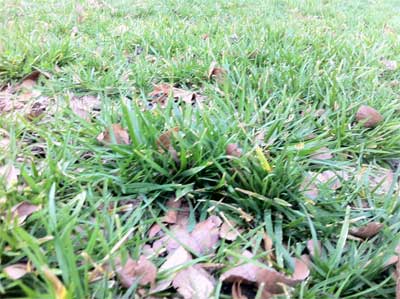
Answer: This is rescuegrass. It’s a fairly widespread cool-season weed in Texas lawns. As does ryegrass, it will die away when temperatures start to climb in late April or May. It is prevented by application of a pre-emergent weedkiller such as Dimension, Balan or Halts in early September. It does not make a satisfactory turfgrass. Once it germinates in September, there is no way to eliminate it within an existing lawn.
Question: I’ve had this contorted filbert for two years, and I feel it needs a little trimming. I’ve brought its overall height down a little bit, but I’m wondering if I should also take out some of the smaller interior branches to allow more light to shine through, also so I can enjoy the look of the shrub itself. Any advice? K.W., no city given.
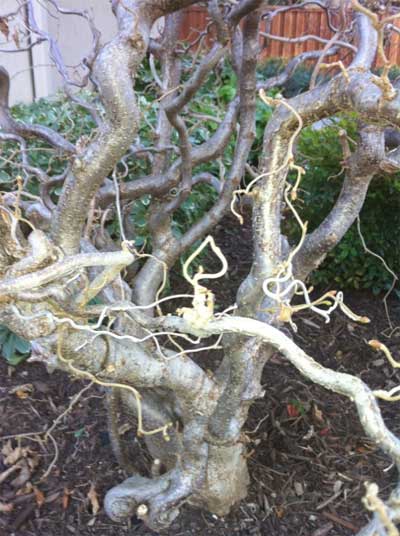
Answer: It could stand a little more grooming, but be careful not to remove too much. Just do one branch at a time. Step back and give it a critical look, then determine if you’re going to remove any more. Great plant, isn’t it! Mine, unfortunately, was riddled by twig girdlers. They eventually ruined almost every stem.
Question: This is an 8-year-old clump of pampasgrass. Over the years, it has developed a dead center. I’ve tried to remove as much of the dead growth as possible, but the pattern seems to be that it will grow wider and not fill in. What should I do? R.C., Fate.
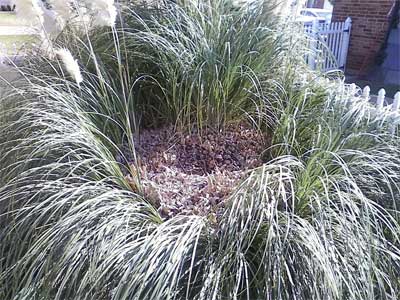
Answer: Pampasgrass is supposed to be evergreen. As far north as you are, it will be browned in colder winters, and this growth pattern is what develops. Take a sharpshooter spade, and dig a clump out of the green growth. If you want more than one plant, dig additional clumps of vigorous, green growth. Set them aside, while you dig out all the rest of the dead growth, also the unwanted portions of the living plants. Once you’re back to regular soil, you can replant the clumps you have saved. Space them 6 or 8 feet apart. In a perfect world, they’ll grow quite large.
Question: As was suggested, I planted ryegrass in my tomato bed to counteract nematodes. What do I do with it now? Rototill it in? Mow and rototill? Leave it in place and plant the tomatoes within it? B.S., Carrollton.
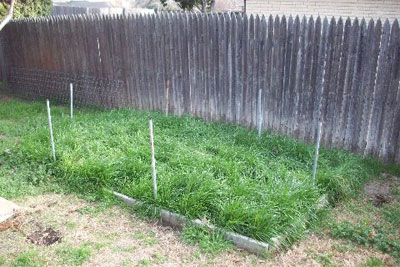
Answer: Nice job! Elbon rye entraps nematodes within its root system. It won’t get them all, but it does help considerably. Mow it, then rototill the area to pulverize the root systems and crowns of the rye. Rake out the stubble as needed. Having said that, no larger than your tomato patch is, would there be any way you could plant tomatoes in another garden somewhere else in your landscape for a year or two? That would further reduce the population of nematodes in this area.
Question: This weed has a foothold in my yard. What is it, and how can I control it? G., Denton.
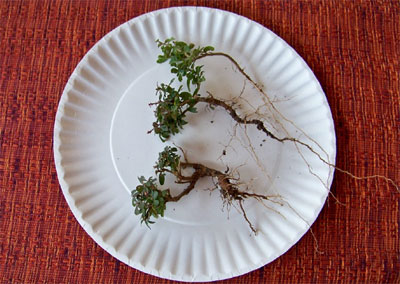
Answer: I can’t get the photo to zoom for me, so I can’t tell exactly what you have. However, that’s really not critical. As obvious as this will sound, this is not a grass. The reason that’s important is because it puts it into the category of needing a broadleafed weedkiller. A herbicide containing 2,4-D will eliminate it. Spray on a still day and when rain isn’t expected for at least 48 hours. Don’t mow for several days before or after you spray. The herbicide will take a couple of weeks to show good effect.
